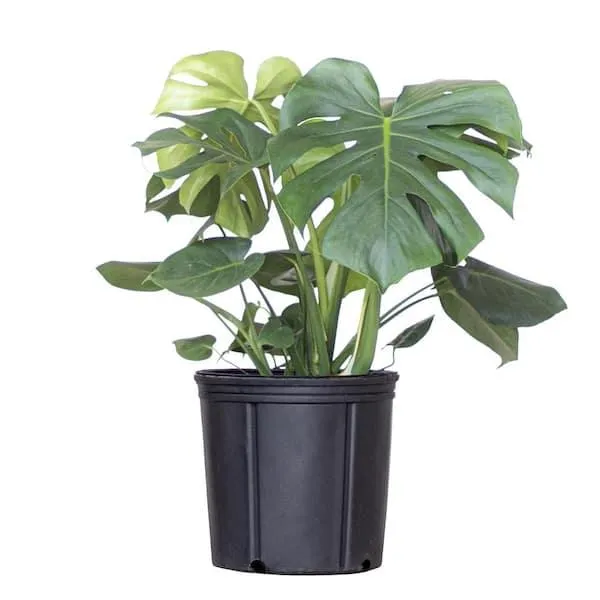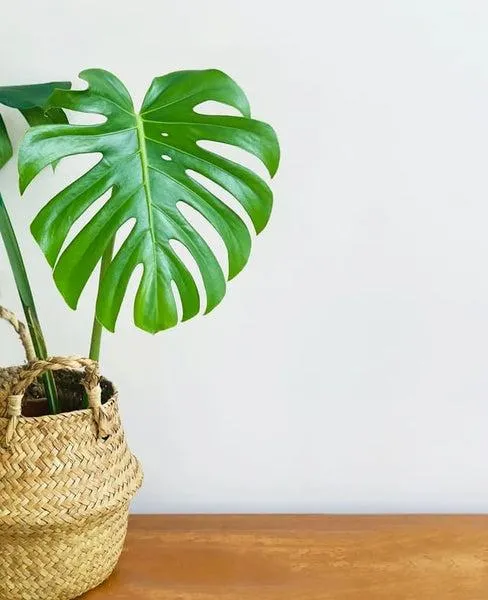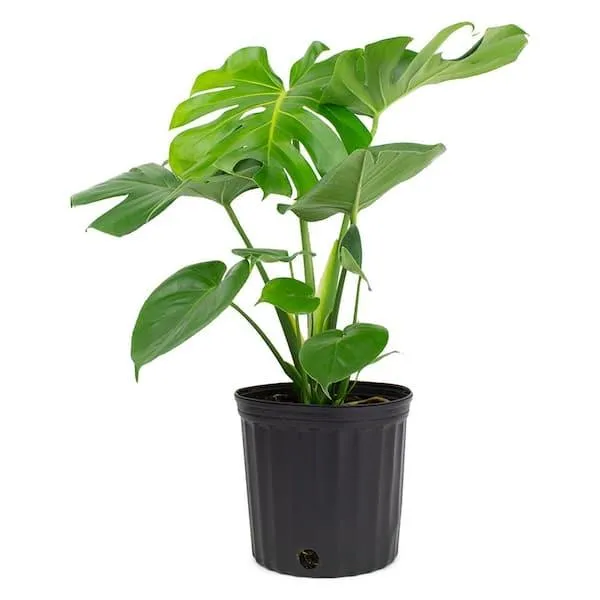All You Need to Know About Philodendron and Monstera Plants Around Dogs
A curious search like “philodendron monstera dogs” likely indicates someone wants to know if these popular houseplants are safe to have around their furry four-legged friends. In this article, I’ll answer all the main questions and intentions a user may have regarding philodendrons, monsteras, and dogs.
Are Philodendron and Monstera Plants Toxic to Dogs?
- Philodendron: Most philodendron plants are considered non-toxic or low toxicity to dogs. However, some varieties like pothos and philodendron cordatum contain insoluble calcium oxalate crystals that can cause mild upset if ingested in large quantities.
- Monstera: Monsteras, or Swiss cheese plants, are generally safe for dogs. They contain very small amounts of insoluble calcium oxalates that would need to be consumed in very large quantities to potentially cause upset.
So in summary, while philodendrons and monsteras are not highly toxic, it’s still best to keep them out of reach of puppies and dogs just in case. The calcium oxalate crystals can theoretically cause mouth irritation if a lot is chewed and swallowed.
Signs Your Dog May Have Ingested Part of a Philodendron or Monstera Plant
Some potential signs to watch out for include:
- Drooling or excessive salivation
- Vomiting
- Diarrhea
- Loss of appetite
- Stomach ache or abdominal pain
Symptoms are generally mild and will pass on their own with no treatment required in most cases. But it’s always a good idea to contact your vet if you notice any concerning signs after your pup may have ingested plant material. They can examine your dog and advise on best steps.
Keeping Philodendron and Monstera Plants Out of Reach
From my experience as a pet owner, it’s crucial to babyproof your home plants so curious pups don’t nibble leaves they shouldn’t. Here are some tips:

- Move plants up high on shelves, bookshelves, or wall planters away from snapping mouths.
- Secure larger plants like monsteras with tension rods or poles so they can’t be unintentionally pulled down.
- Use decorative closed terrariums as a visual barrier puppies can’t penetrate.
- Trim away any low-hanging or drooping leaves within easy reach.
- Close doors to plant-filled rooms when dogs are unsupervised.
- Redirect pups with chew toys if they start nosing leaves as a deterrent.
Being proactive like this prevents any accidental consumption and ensures peace of mind for humans and happy, healthy pups.
Is It Okay If My Dog Sniffs or Touches Philodendron/Monstera Plants?
In most cases, it’s absolutely fine and harmless for dogs to simply sniff, lick, or touch houseplants with their paws. The calcium oxalate crystals that could potentially cause issues usually need to be ingested in plant material.
Some dogs may even be enticed to chew from the different textures or scents. As long as plants are kept high or physically inaccessible, superficial contact won’t hurt dogs. Just keep an eye to ensure nibbling doesn’t begin. Brief smelling presents no danger.
Can Philodendron or Monstera Leaves Be Used as Edible Dog Chews or Treats?
While very small amounts of the leaves are unlikely to harm dogs, it’s still not recommended to use philodendron or monstera as edible treats or chews. Their calcium oxalate content means repeated chewing could pose a small risk of mouth irritation over time.
Some safer and healthier chew options for dogs include:

- Raw beef or pork bones (supervised)
- Nylon or natural chew toys
- Dried sweet potato, banana or pumpkin chips
- Bully sticks or treats designed specifically for dogs
Stick to commercial treats and dental chews formulated by pet experts rather than risking plant matter that wasn’t meant for consumption. Pups’ health and safety should always come first!
Can I Use Philodendron or Monstera Leaves as Potpourri Around the House with Dogs?
While dried plant materials may release pleasant scents, it’s best not to use philodendron or monstera leaves for potpourri when dogs are around. Even though the risk is lower, dried leaves could still possibly be ingested accidentally through nibbling or inhalation.
Safer natural diffusion options include essential oils, fresh or dried citrus peels, lavender, eucalyptus and other dog-safe fragrant herbs. Your nose – and your pup’s safety – will thank you! Potpourri is one home decor choice better left without dogs in mind.
In conclusion, with some common-sense precautions like keeping plants high and out of mouth’s reach, philodendron and monstera plants can coexist peacefully in homes with dogs. But it’s always far better to err on the side of puppy protection, so avoiding any ingestion of plant material is the wise approach. With vigilance, your flora and fauna pals can happily share living spaces together.
I hope this helps provide a thorough answer to anyone wondering about their pets and keeping philodendron or monstera plants! Let me know if any other questions come up. With cooperation from human guardians and natural deterrents, pups and houseplants can get along like branches in the wind.

Caring for a Philodendron Monstera with Dogs in the Home
| Plant Care Consideration | Details |
|---|---|
| Sanitation | Wipe down leaves weekly to remove dirt and pet hair that could harbor pests or diseases. |
| Location | Place out of reach of dogs on high shelves or hang from the ceiling. |
| Watering | Water when top 1-2 inches of soil are dry. Be mindful of potential spills from knockovers. |
| Fertilizing | Apply diluted liquid fertilizer monthly March-September when actively growing. |
| Light | Bright, indirect light is ideal. Move from direct sun if leaves burn. |
| Pruning | Trim off yellow or browning leaves and stems to encourage new growth. |
FAQ
-
Can philodendron and monstera houseplants injure dogs?
Many houseplants like philodendrons and monsteras could potentially harm dogs if they eat large amounts of the leaves or flowers. The sap and some parts of these plants contain calcium oxalate crystals that can irritate the mouth and cause an uncomfortable tummy ache for dogs. However, a tiny bite is generally not too big of a deal for most pups.
-
What should I do if my dog eats part of a philodendron or monstera?
If you see your dog nibble on a non-toxic plant, don’t panic. Keep an eye on them and make sure they don’t eat a ton of it. But if they wolf down a big mouthful, you may want to monitor them closely for signs of discomfort like panting, vomiting, or refusing food. Contact your vet if symptoms appear severe. They may suggest giving the dog a small amount of milk to help counteract any calcium oxalate irritation.
-
Are there any philodendron or monstera varieties that are more poisonous?
Generally speaking, most varieties of philodendron and monstera are considered non-toxic in small amounts. Nonetheless, it’s worth double checking types like split-leaf philodendron, which may potentially cause more significant issues if adog consumes large quantities due to higher calcium oxalate levels. Maybe play it safe and keep uncommon cultivars out of puppy’s reach.
-
Can dogs tolerate being around philodendron and monstera plants?
For the most part, yes – as long as they aren’t constantly monitoring plants. On the other hand, dogs with a strong history of plant destruction or eating may not do well with leafy houseplants nearby. It depends on the individual dog. The best idea is to puppy-proof problem areas, replace damaged leaves, and redirect plant-munching behaviors to acceptable chew toys. With guidance, many canines can respect green friends.

-
How can I make philodendron and monstera plants less appealing to dogs?
One option is to apply unpleasant-tasting sprays or gels designed to deter chewing. You can also try placing physical barriers like wooden stakes or mesh guards around vulnerable pots. Keeping plants high out of jaws’ reach may avert temptation, too. Decoration can disguise tempting foliage – try using pebbles, mulch or pine needles as natural plant armor. Positive reinforcement training focused on “leave it” commands can help reinforce good behavior over time as well.
-
Are there any safe alternative houseplants for homes with dogs?
Low-risk plant picks that usually don’t concern canine companions include sturdy succulents like aloe vera, jade and haworthia. Snake plants, pothos, spider plants andEnglish ivy tend to withstand curious sniffs with aplomb, too. Orchids, bamboo and peace lilies also pose small risks. Plus, settling on pet-friendly, non-toxic greeneryallows you to bring the outside in without worrisome woofers. It’s all about finding the right leafy matches.
-
What other tips can help keep dogs and houseplants coexisting peacefully?
In addition to choosing dog-dodgy plants and maintaining barriers, give your pup positive outlets for their natural exploring instincts. Provide interactive puzzle toys or chew treats when you water. Brush up on obedience lessons to reinforce safe plant behavior. And share the load – enlist friends to walk energetic pups if you’ll be plant parenting. With patience and prevention, even enthusiastic Fidos can keep their paws off exotic flora.
